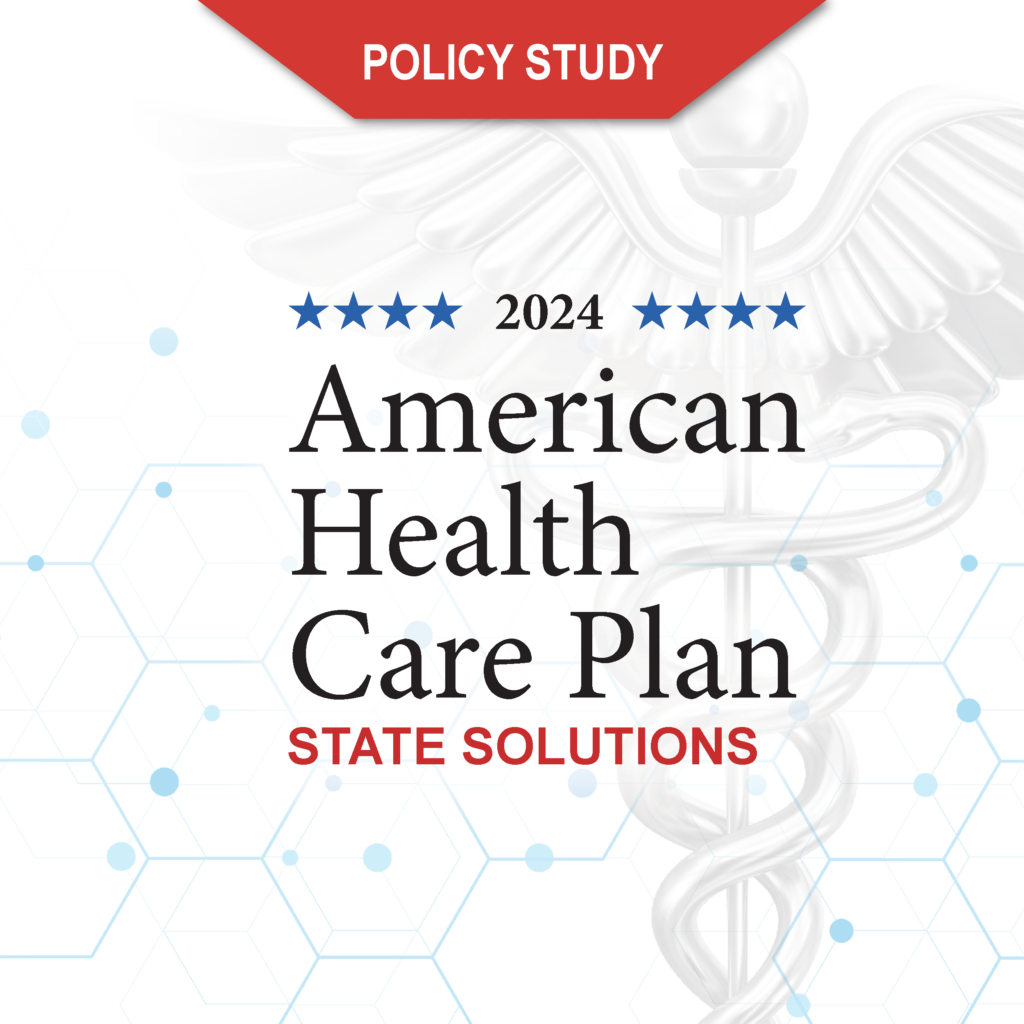The federal Tax Cuts and Jobs Act, signed into law December 2017, repealed the Affordable Care Act’s most infamous and unpopular provision: the individual health insurance mandate. The controversial mandate, opposed by 55 percent of Americans in a November 2017 Kaiser Family Foundation poll, taxed people who did not purchase “qualified” health insurance for either themselves or their dependents. In 2012, the Supreme Court narrowly upheld the mandate based on the constitutional authority given Congress to levy taxes. Since then, the individual mandate tax has been the ire of many politicians and political pundits who claim forcing Americans to purchase a product, and punishing them for not doing so, is antithetical to the very notion of freedom.
Health plans in the Affordable Care Act (ACA) insurance exchanges are plagued with rising premiums, scant coverage, and higher cost-sharing fees because of an enrollment decline and fewer participating health insurers. Individual mandate proponents argue requiring everyone to purchase comprehensive plans would save exchanges from financial collapse because young, healthy individuals would stabilize the risk pool and subsidize the costs of older, sicker individuals. They also argue the mandate has contributed to a lower rate of uninsured people, although more than 28 million people in the United States don’t have health insurance. Legislators in nine states, such as California, Connecticut, and Washington, are considering legislation that would counteract the federal repeal and reimpose the individual mandate for residents in their states.
The Heartland Institute recently published Research & Commentaries examining these individual mandate bills. Maryland and New Jersey’s proposals would institute the same ACA penalty of 2.5 percent of adjusted gross income or $695 per adult and $347.50 per child, whichever amount is greater, on uninsured residents. Currently, the tax penalty is not punitive enough to entice many younger and healthier people to purchase expensive health insurance in the exchanges. It is more economical for many young, healthy individuals to simply pay out-of-pocket for the few times they actually utilize health care services. And, if they ever suffer a catastrophic illness, they can always sign up for insurance because of ACA’s pre-existing coverage provision. The Connecticut proposal attempts to remedy this loophole with a much steeper tax penalty: 9.66 percent of annual income or $10,000, whichever is higher.
According to 2015 Internal Revenue Service data (the latest available), more than 77 percent of those who paid the individual mandate tax in Connecticut, Maryland, and New Jersey have annual incomes less than $50,000. On a national level, 79 percent of all Americans who paid the penalty had incomes less than $50,000. In 2015, the federal government collected a whopping $3 billion from the uninsured. The median income for 2015 was $59,039, which means the individual mandate tax falls disproportionately on poor and lower middle class households who cannot afford the “comprehensive” health plans the ACA mandates everyone purchase.
If legislators want to help more people of all ages and health conditions obtain health insurance, they should promote policies that allow insurance companies to craft plans that are diverse in benefit and network coverage, cost-sharing fees, and premium costs. Doing so would allow more individuals and families to buy plans that are specific to their needs and fall within their budgets.
Lawmakers could start by establishing state high-risk pools for uninsurable people, repealing costly mandated benefits, allowing insurance companies to underwrite plans, eliminating certificate-of-need laws, and adding health savings account options for state employees and Medicaid enrollees.
Another option is to apply for Section 1332 innovation waivers from the Centers for Medicare and Medicaid Services. If approved, these waivers would allow states flexibility to administer exchanges and craft affordable insurance plans.
What We’re Working On
Health Care
Minnesota Should Lower Regulatory Barriers for Direct Primary Care
Senior Policy Analyst Matthew Glans examines a bill in Minnesota that would expand direct primary care by eliminating baseless insurance regulations. “Direct primary care empowers patients and doctors, giving them greater freedom to establish and participate in models that work best for their unique needs. Minnesota should remove unnecessary regulatory barriers to direct primary care, to help revitalize the state’s health care system,” wrote Glans.
Budget & Tax
Missouri Tax Plan Would Be a Good Start
In this Research & Commentary, Matthew Glans reports on a tax reform plan in Missouri that would cut personal and corporate income tax rates. “Cutting the personal and corporate income tax would improve Missouri’s economic competitiveness, leaving more money in the pockets of the state’s citizens and businesses to spend, save, and invest. However, lawmakers should avoid tying tax or fee increases to inflation whenever possible, because doing so reduces accountability and could create additional problems for working families in tough economic times,” Glans said.
Energy & Environment
ESSEX Carbon Tax Plan a Bad Deal for Vermonters
Policy Analyst Tim Benson discusses a proposal in the Vermont Senate that would establish a $40-per-ton carbon-dioxide tax on fossil fuels. The Economy-Strengthening Strategic Energy Exchange (ESSEX) Act would tax gasoline, heating oil, natural gas, and propane, and would begin at $5 per ton in 2018 and increase by $5 per ton each year until 2026. Benson argues a carbon-dioxide tax would increase living expenses for working families in Vermont, who are already pinched by the state’s high costs, leaving them less to spend and save – all without any guaranteed environmental benefits.
Education
School Choice Programs and Their Effect on College Enrollment
In this Research & Commentary, Tim Benson writes about the effects school voucher programs in Milwaukee and Washington, DC are having on college enrollment. In Milwaukee, elementary school students participating in the voucher program are nine percent more likely to enroll in college than their public school peers, while high school students are 16 percent more likely to enroll in college than their public school peers. In DC, students enrolled in the city’s program were not significantly more or less likely to enroll in college than students who tried to enroll in the program but did not do so because they did not win a scholarship, which are awarded by random lottery. A previous study in this series found the Florida Tax Credit Scholarship Program led to a 15 percent college enrollment increase.
From Our Free-Market Friends
A Money-Saving Education Savings Account Proposal
Byron Schlomach and Vance Fried at the 1889 Institute, an Oklahoma-based free-market think tank, propose an education savings account (ESA) that provides funding to participating public school students but still reduces government education expenditures. The ESA program would give students $3,000 in ESAs. This $3,000 amount is less than the average $5,000 local school districts currently spend per district pupil, saving the state $2,000 per participating ESA student. Schlomach and Fried find that relatively few students need to participate in the program for the state to reap significant savings. If only 0.4 percent of Oklahoma public school students participate, the state would still save $5 million.
Click here to subscribe to The Leaflet, the weekly government relations e-newsletter.




